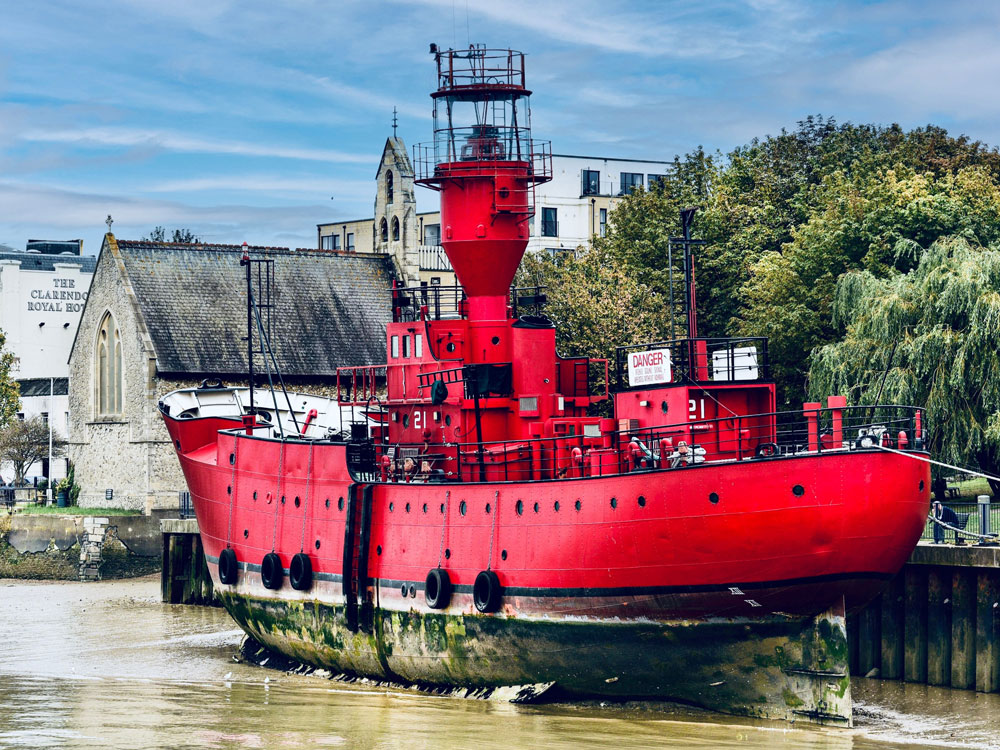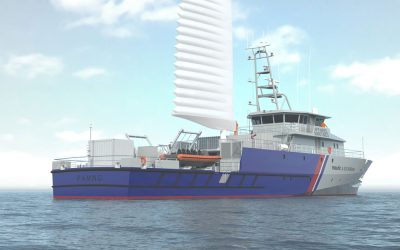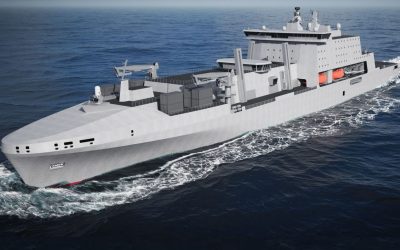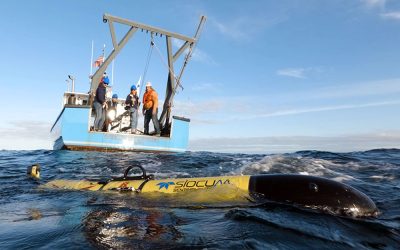While the classification of operational ships can be a challenging task, the compliance required to ensure safe navigation is at least well-known, in most cases. However, when it comes to static floating ships, the regulations become much more ambiguous. As John Monasta, associate director at maritime engineering firm Beckett Rankine, explains, the first key question to ask may be: “When does a ship stop being a ship and become a floating building?”
Data shared by National Historic Ships UK suggests that there are more than 2,000 historic ships around the UK, either moored, under restoration or no longer afloat. As Monasta points out, there is a misconception that, once a retired or historic ship has been moored – and now functions as a tourist attraction, a floating museum or a bar or restaurant – the need to conduct regular stability assessments is diminished.
“There have been instances where historic vessels have capsized and sunk,” Monasta tells The Naval Architect. He references the sinkings of the 1864-launched naval training ship City of Adelaide, in Glasgow, in 1991; the 1888-launched fishing boat Esther, in Hull, in 2012; the King’s ship HMS Bronington, in Birkenhead, in 2016; and a 110-year-old floating restaurant, on the River Thames, in 2024 as just four examples.
“It isn’t uncommon, especially when the vessel is neglected or not properly maintained, for it to sink when a pump trips out or a hull fitting springs a leak,” Monasta continues. As well as the commercial loss of the ship, this poses a health and safety-related risk to any sightseers or guests who may be aboard at the time. “In reality, from a regulatory perspective, the only people interested in monitoring floating restaurants and pubs are food hygiene inspectors and the fire brigade,” he says.
Maintaining historic ships has become increasingly challenging due to a shortage of individuals with the necessary skills, Monasta adds. “Until very recently, we had ex-mariners, ex-naval architects and retired admirals maintaining these vessels,” he says, “but, as the industry changes and these people retire, museum curators have taken over this role.
“However, these curators often don’t have the necessary legacy knowledge. We’ve noted that historic floating ships owned by societies where the key personnel are naval architects tend to be more aware of the risks; even if they haven’t conducted an inclining test in 30 years, they’ve done stability checks and analysed the risks. On the other hand, many museum staff haven’t seen a stability booklet and don’t know what GM is.”
This lack of experience has led to some risky ship modifications – for example: overloading the top deck with additional balconies, seats or bar areas; removing heavy items such as engines; decommissioning bilge pumps to create additional space; and cutting through the bulwarks to make the interiors more accessible to disabled visitors – all typically done “without a naval architect in sight”, and with no follow-up stability testing, Monasta says. “Having no pumps on board is one thing, but many curators don’t know that they should have a back-up pump plan – they wouldn’t know who to call to supply a pump if flooding did occur,” he says. “A lot of these vessels are in waterways where there’s some traffic – so, once you’ve removed the bulkheads, you’re in trouble if the ship suffers a leak or impact damage.”

John Monasta, Beckett Rankine: “There isn’t enough understanding of the potential risks for static floating vessels”
As a naval architect and engineer by trade, Monasta was keen to raise awareness of the need for proper stability checks for floating static vessels. However, he soon found he was dealing with a regulatory “grey zone”. For example, operational ships comply with the standards set by IMO, their local maritime authority (such as the MCA in the UK) and the classification societies. Structures technically classed as ‘buildings’ in the UK, meanwhile, come under the Construction (Design and Management) 2015 (CDM 2015) regs, introduced 10 years ago to ensure that structures are safe to build and use. Static floating ships, though, tend to fall uncomfortably between both stools.
“There’s a whole shade of grey in the middle and an absence of industry standards for these vessels,” Monasta notes. “Even shipyards are considered ‘factories’, and so are not covered by CDM 2015, under UK law. Static floating ships are currently in a vacuum – and it will stay that way until either a serious accident occurs, or someone takes a political interest in this.”
“There isn’t enough understanding of the potential risks for static vessels,” Monasta continues. But there can be advantages to this lack of distinct regulation in the UK. Without a regulatory body dictating a strict set of assessment rules for static floating vessels, the maritime heritage sector can take a risk-based approach to its asset management. In turn, “this offers the freedom to put the historic fabric of the vessels at the core of their conservation”. The newly released stability guidance offers practical solutions without compromising the individual vessel’s heritage.
So, in collaboration with National Historic Ships UK and supported by funding from Lloyd’s Register Foundation, Monasta and Beckett Rankine have co-launched the ‘Don’t Rock the Boat’ project, focusing on static floating ship stability and related risk mitigation. This initiative has culminated in the publication of the UK’s first-ever set of guidelines specifically tailored towards these ship types. Monasta adds that the plan is to use this guidance “as a foundation for conversations with our clients”, and as a useful resource for contractors and service providers, particularly in addressing the often-confusing overlaps between maritime and offshore regulations, UK Common Law requirements and other grey areas related to liability and insurance.
The guidance begins with an introduction to ship stability, including topics such as downflooding and stability assessments, and goes on to provide an overview of existing IMO, MCA and UK health and safety legislation. The document also provides real-life case studies of related incidents and provides a checklist of recommended actions (such as hiring a qualified naval architect and accurately measuring the vessel’s heel angle). Interestingly, National Historic Ships UK comments, the guidance could be extended beyond historic vessels and applied to any static floating structure.
The new guidance on static floating ships can be accessed free of charge at: www.nationalhistoricships.org.uk/technical-papers/stability-guidance-floating-static-vessels




